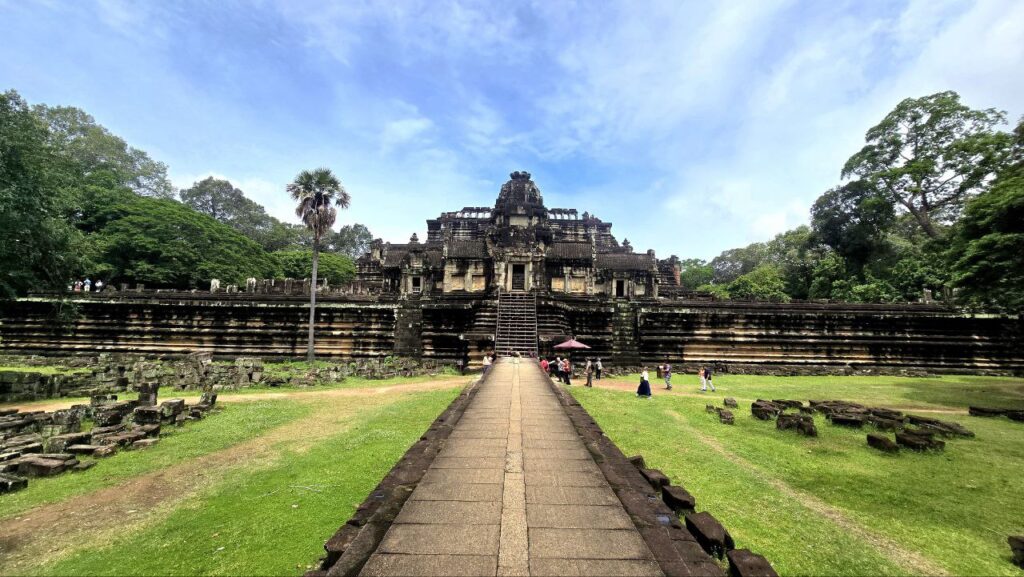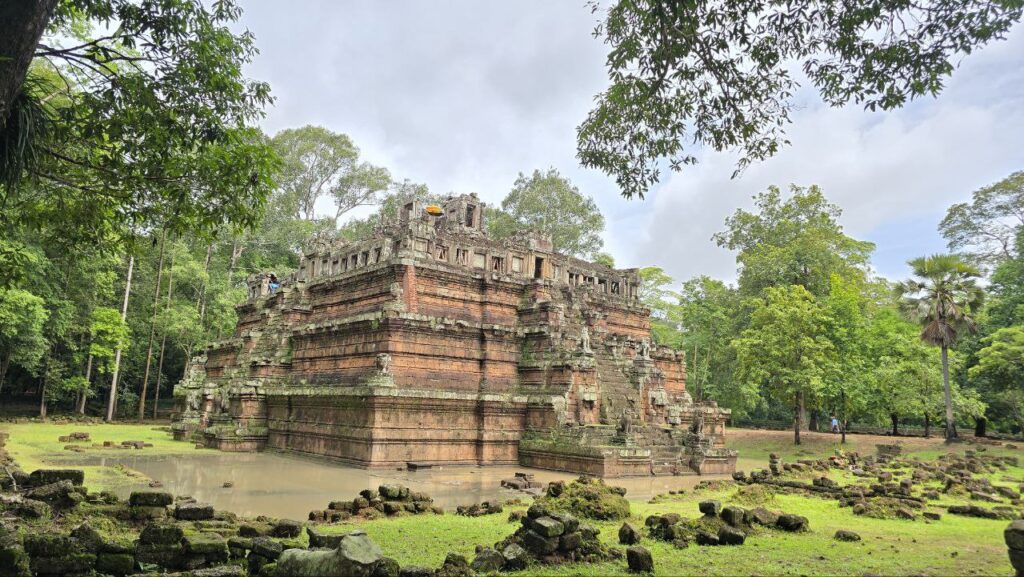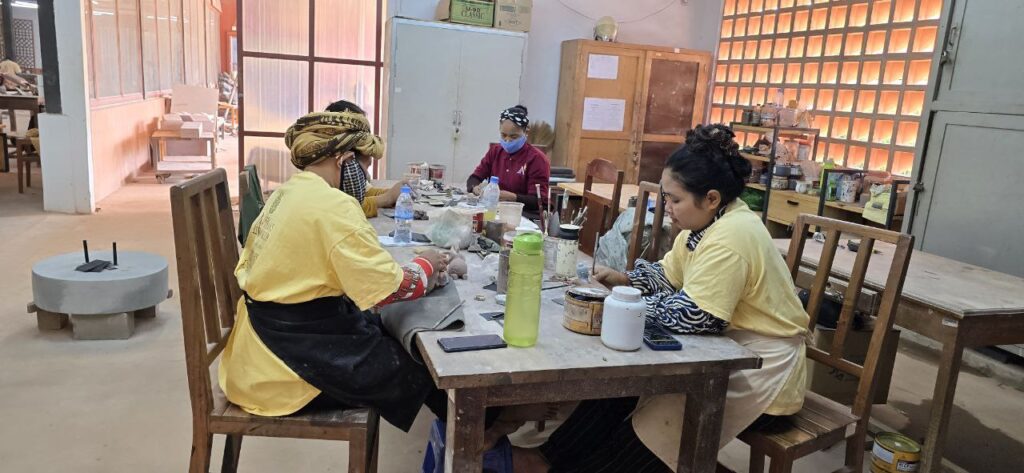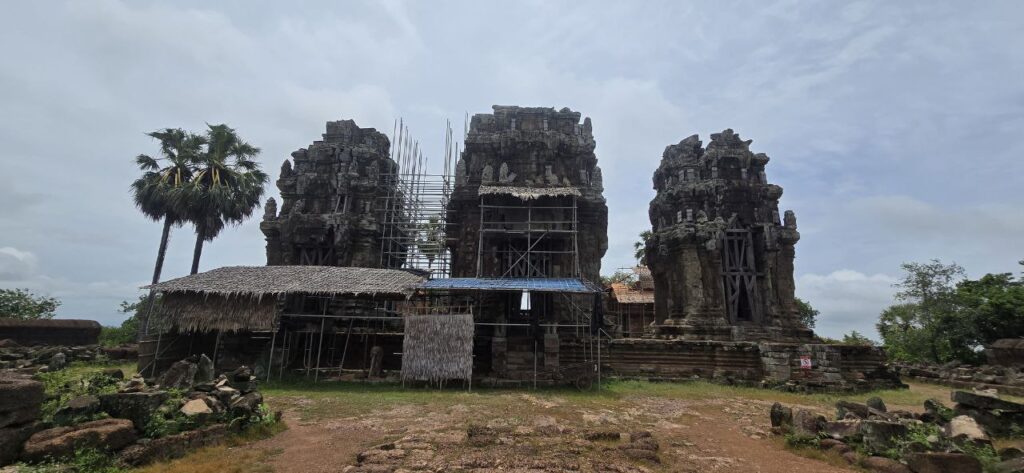
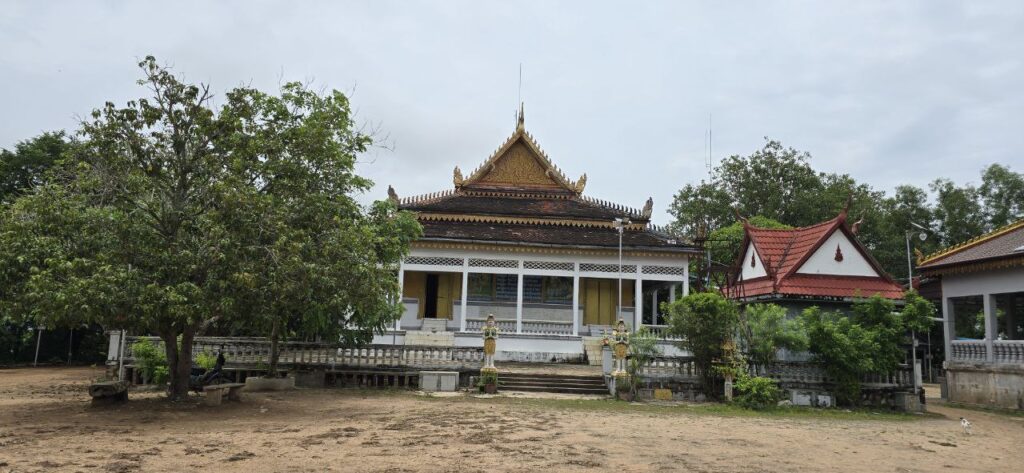

Perched atop Phnom Krom Hill, about 12 kilometers southwest of Siem Reap, the Phnom Krom Temple is an ancient Angkorian-era site offering breathtaking views of the Tonlé Sap Lake and surrounding countryside. Built in the late 9th to early 10th century during the reign of King Yasovarman I, this temple is a striking example of Hindu architecture dedicated to the Trimurti—Brahma, Vishnu, and Shiva.
Historical Significance
Phnom Krom was constructed as part of King Yasovarman I’s temple-mountain projects, which also included Phnom Bakheng and Phnom Bok. These temples were strategically placed on hills to serve both religious and astronomical purposes, aligning with the sun’s movements during solstices.
Originally a Hindu sanctuary, the temple later adapted to Buddhist worship, reflecting Cambodia’s religious transitions. Its elevated position also made it a strategic lookout point over the Tonlé Sap, an essential waterway for trade and agriculture in the Khmer Empire.
Architecture & Layout
The temple follows a quincunx layout, with a central tower surrounded by four smaller shrines, symbolizing Mount Meru, the sacred mountain in Hindu cosmology. Built from laterite and sandstone, the structures have endured centuries of weathering, yet retain intricate carvings and lintels depicting Hindu deities.
Central Sanctuary: Dedicated to Shiva, the main tower once housed a lingam.
Northern & Southern Towers: Honoring Vishnu and Brahma, respectively.



